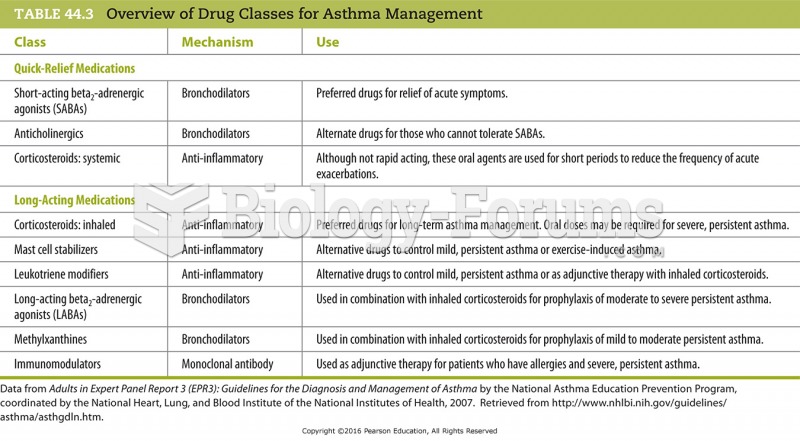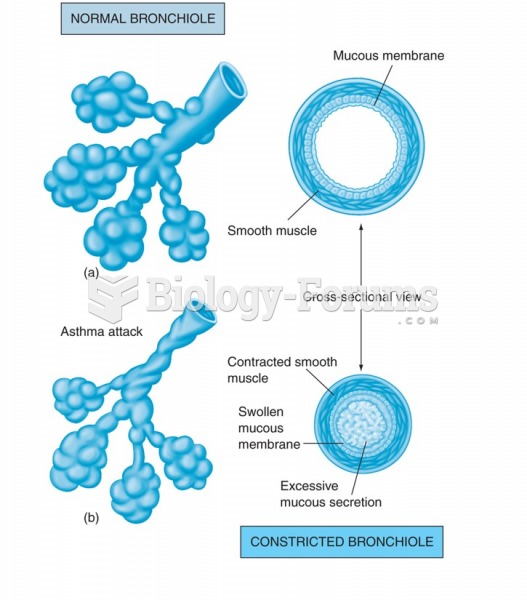Answer to Question 1
Correct Answer: 1,2
Rationale 1: Albuterol is a short-acting beta-adrenergic agonist and is the preferred drug for relief of acute symptoms because it relaxes bronchial smooth muscle.
Rationale 2: Ipratropium is an anticholinergic, which can relax bronchial smooth muscle and is an alternate quick-relief drug for clients who cannot tolerate short-acting beta-adrenergic agonists.
Rationale 3: Beclomethasone is a corticosteroid that decreases inflammation. This drug prevents the incidence of bronchospasm but should not be used as a quick-relief drug.
Rationale 4: Cromolyn is a mast cell stabilizer that decreases inflammation. This drug prevents the incidence of bronchospasm but should not be used as a quick-relief drug.
Rationale 5: Montelukast is a leukotriene modifier that decreases inflammation. This drug prevents the incidence of bronchospasm but should not be used as a quick-relief drug.
Global Rationale: Short-acting beta2-adrenergic agonists like albuterol are the preferred drugs for relief of acute symptoms. If SABAs cannot be tolerated anticholinergics such as ipratropium are recommended. Beclomethasone, cromolyn, and montelukast prevent the incidence of bronchospasm, but are not used as a quick-relief drug.
Answer to Question 2
Correct Answer: 1,2,3
Rationale 1: The National Asthma Education and Prevention Program (NAEPP) recommends client education regarding the use of medication for symptoms.
Rationale 2: The National Asthma Education and Prevention Program (NAEPP) recommends education regarding environmental triggers.
Rationale 3: The National Asthma Education and Prevention Program (NAEPP) recommends managing comorbidities.
Rationale 4: The National Asthma Education and Prevention Program (NAEPP) recommends a stepwise, flexible approach to asthma control based on the frequency and severity of symptoms.
Rationale 5: The National Asthma Education and Prevention Program (NAEPP) recommends identifying the minimum amount of medication needed to control symptoms.
Global Rationale: The National Asthma Education and Prevention Program recommends incorporation of four components of care: medications, patient education, environmental control measures, and management of comorbidities. The National Asthma Education and Prevention Program (NAEPP) recommends a stepwise, flexible approach to asthma control based on the frequency and severity of symptoms using the minimum amount of medication.







